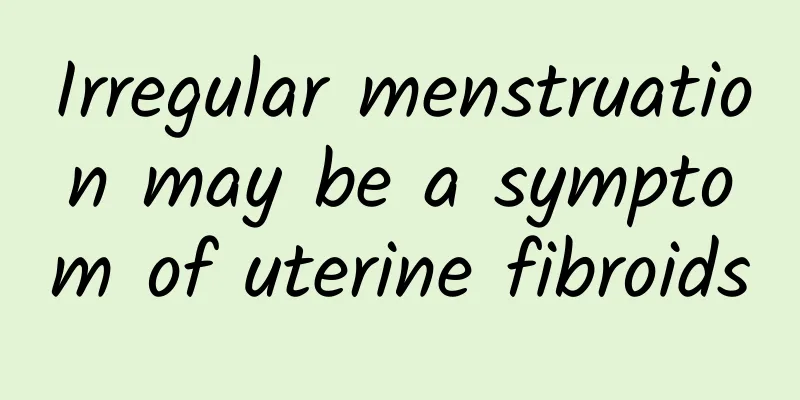What are the symptoms of left ovarian cyst and how to care for it

|
To be precise, the left ovarian cyst is an ovarian tumor, which refers to the formation of a cystic mass in the ovary. So, what are the symptoms of the left ovarian cyst? How to take care of it? Cysts can be benign, malignant, cystic or solid. The mortality rate of malignant ovarian cysts is high, ranking first among gynecological tumors. Therefore, once it is confirmed that it is a left ovarian cyst, it needs to be paid attention to. Symptoms of left ovarian cysts include: 1. Increased abdominal circumference and abdominal swelling are the most common phenomena in patients. 2. Abdominal pain: If the cyst has no complications, there is little pain. Patients with ovarian tumors may feel abdominal pain, especially if it occurs suddenly. This is usually caused by torsion of the tumor pedicle, or occasionally by cyst rupture, bleeding or infection. 3. Menstrual disorders. 4. Compression symptoms. A huge ovarian cyst can cause dyspnea and palpitations due to compression of the diaphragm. Ovarian cysts combined with a large amount of ascites can also cause such symptoms. If the left ovarian cyst is not treated in time, it will cause many harms. Below, the author introduces some care methods to you: 1. Environmental adjustment: It is not suitable to live in a humid environment; in rainy seasons, be careful of the invasion of dampness. 2. Exercise: PCOS patients with phlegm-damp constitution are often obese, heavy and easily fatigued, so they should persist in physical exercise for a long time. 3. Medication-assisted conditioning: There are many health products and drugs for ovarian conditioning on the market. Patients should combine the doctor's advice and choose the appropriate medication for conditioning according to their own situation. 4. Relax, build confidence in treatment, and be patient in treatment. Young women with this disease who are not treated have a high chance of developing type 2 diabetes in middle and old age. Untreated this disease is considered a progressive syndrome, which will last a lifetime once it occurs. |
<<: How do ovarian cysts form?
>>: How to Check for Uterine Fibroids
Recommend
After the Mid-Autumn Festival, I have gastroenteritis and vomiting and diarrhea. Can I only eat porridge? ! Nutritionist Gao Minmin: 6 key points of diet for gastroenteritis
The Mid-Autumn Festival is coming soon. When ever...
How much does it cost to treat functional uterine bleeding?
Functional uterine bleeding, also known as DUB, i...
Why is the probability of another ectopic pregnancy higher?
Some causes of ectopic pregnancy will seriously a...
Don’t eat breakfast for fear of getting fat? Weight loss starts with breakfast! Dr. Liu Boen: 4 principles for not eating fat for breakfast
Eating the wrong foods can easily make you fat. S...
What is Liu Genghong's emergency weight loss method? Can you lose weight and get curves in 7 days? What should be done?
Do you envy Genghong for still having such a good...
Prevention of hyperprolactinemia in daily life
Gynecological diseases are very harmful to women....
What kind of fruit should I eat for dysmenorrhea? How to properly relieve dysmenorrhea
After dysmenorrhea occurs, it must be relieved co...
To keep your mind clear, you need high-quality protein! Nutritionist Xu Yongxiang: Eat "this bowl" for breakfast to make your brain smarter
Modern office workers often ignore the importance...
What can I eat to relieve dysmenorrhea?
Dysmenorrhea not only affects women's physica...
What causes dysmenorrhea?
Dysmenorrhea refers to pain in the lower abdomen ...
How to get pregnant easily with pelvic effusion
Does pelvic effusion affect pregnancy? Regarding ...
Can I eat chili peppers after cervical erosion surgery?
Can I eat hot peppers after cervical erosion surg...
Patients with vulvar leukoplakia should pay attention to vulvar cleanliness and balanced diet
Vulvar infection and inflammatory stimulation are...
You can't afford it! Hidden dangers of fat in diet
Your baby always stuffs snacks into his mouth one...
The cause of hereditary vulvar leukoplakia is mainly atrophic
Experts say that vulvar leukoplakia has caused ha...









